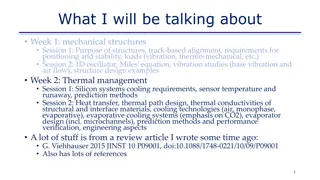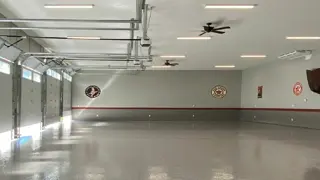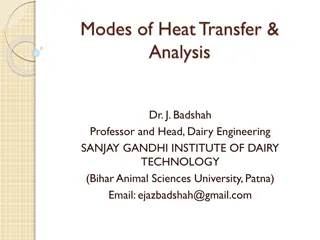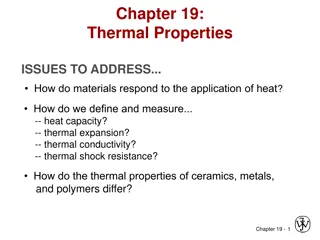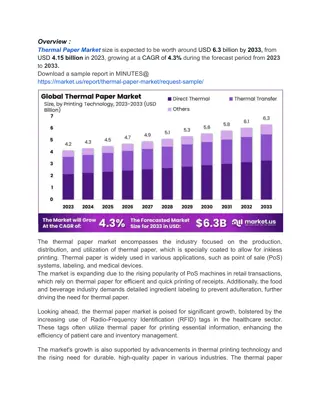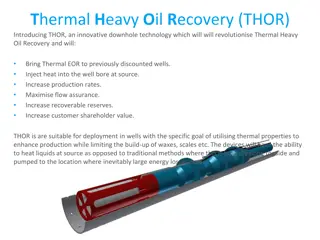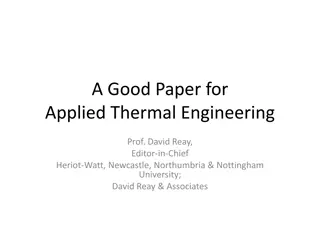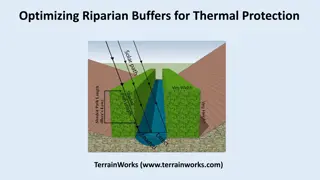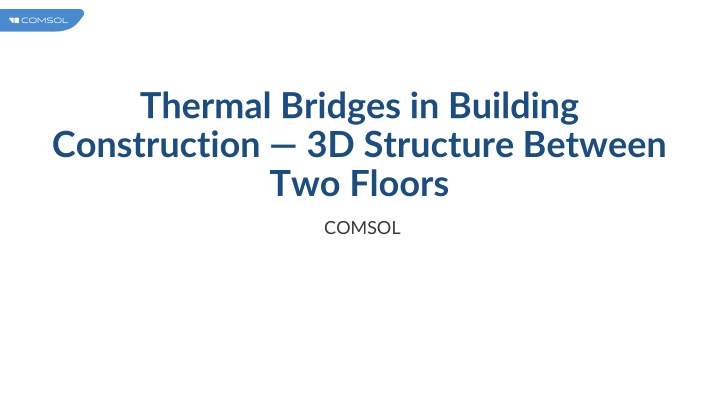
Thermal Bridges in Building Construction Through 3D Modeling
Explore how COMSOL Multiphysics simulates thermal bridges in building construction based on European standards. Witness the analysis of heat conduction, temperature distribution, and minimum temperature prediction within the structure.
Download Presentation

Please find below an Image/Link to download the presentation.
The content on the website is provided AS IS for your information and personal use only. It may not be sold, licensed, or shared on other websites without obtaining consent from the author. If you encounter any issues during the download, it is possible that the publisher has removed the file from their server.
You are allowed to download the files provided on this website for personal or commercial use, subject to the condition that they are used lawfully. All files are the property of their respective owners.
The content on the website is provided AS IS for your information and personal use only. It may not be sold, licensed, or shared on other websites without obtaining consent from the author.
E N D
Presentation Transcript
Thermal Bridges in Building Construction 3D Structure Between Two Floors COMSOL
Background This test case is given by the European standard EN ISO 10211:2007 for thermal bridges in building constructions. It is one of the four tests to validate a numerical method COMSOL Multiphysics successfully passes all tests and is therefore classified as a three- dimensional steady-state high precision method Heat conduction in solids is modeled to predict heat losses and minimum temperature inside the building
Model Definition The wall separating internal and external surfaces is a three-layer wall. An insulation layer is surrounded by an inner and an outer wall A thermal bridge is introduced between the two floors Flooring is also being considered inside the building Model geometry
Model Definition The model accounts for thermal conduction Convective heat fluxes conditions are defined from the indoor or outdoor temperature and a heat transfer coefficient 5 different materials are defined for the different parts The thermal conductivity of the horizontal structure is higher than that of the other components Model boundary conditions
Results The temperature is computed in the whole domain, and the heat fluxes are accessible on all surfaces The temperature distribution illustrates the thermal bridge induced by the thermally conductive material used for the horizontal structure Temperature in the whole domain
Results The minimum temperature is located at the corner between the inner walls and the horizontal structure The expected minimum temperature on surface is 11.32 C. The computed value is within the 0.1 C tolerance of the ISO standard Temperature on surface
Results The minimum temperature is located at the corner between the inner walls and the horizontal structure The expected minimum temperature on surface is 11.11 C. The computed value is within the 0.1 C tolerance of the ISO standard Temperature on surface
Results The expected values of heat fluxes are: 46.09 W through . The computed value is 46.19 W 13.89 W through . The computed value is 13.92 W 59.98 W through . The computed value is 60.12 W All three results are within the 1% tolerance of the ISO standard Heat fluxes in the domain




